Abstract
The number of tumors initiated by Agrobacterium tumefaciens strain B6 on primary pinto bean leaves was decreased when cells of an avirulent strain (IIBNV6) were included in the inoculum. With sufficient B6 cells to initiate ca. 50% of the maximal number of tumors per leaf, inhibition was detected at a 1:1 ratio of B6 to IIBNV6 cells and increased linearly with the logarithm of the number of IIBNV6. Varying the number of B6 in the presence of a constant number of IIBNV6 or varying the number of both, while maintaining a constant ratio of B6 to IIBNV6, showed that the inhibition was a function of the absolute concentration of each cell type. The data fit a one-particle dose response curve, which indicates that a single IIBNV6 cell can prevent tumor initiation by a single B6 cell. Inhibition was obtained with mixed inocula and when the addition of IIBNV6 preceded B6, but not when B6 preceded IIBNV6. Heat-inactivated IIBNV6 inhibited, as did ultraviolet or heat-inactivated B6. Several unrelated bacteria and certain strains of Agrobacterium failed to inhibit, whereas other related strains gave inhibition. Attachment of IIBNV6 to a specific would site, thus excluding B6 from the site, is proposed to account for these data. A specific complementary binding of a virulent bacterium to a host wound site exposed by the inoculation procedure is suggested as an essential early event in the crown-gall tumor initiation process.
Full text
PDF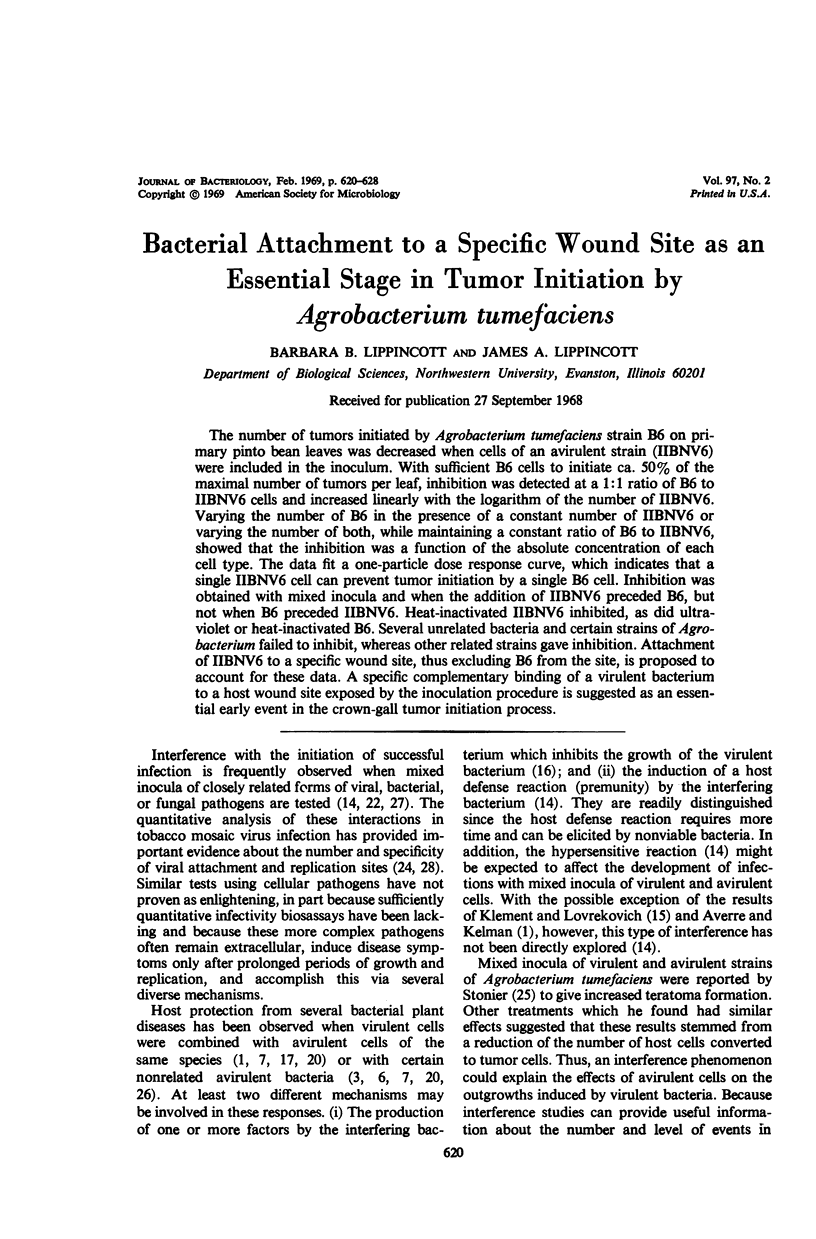
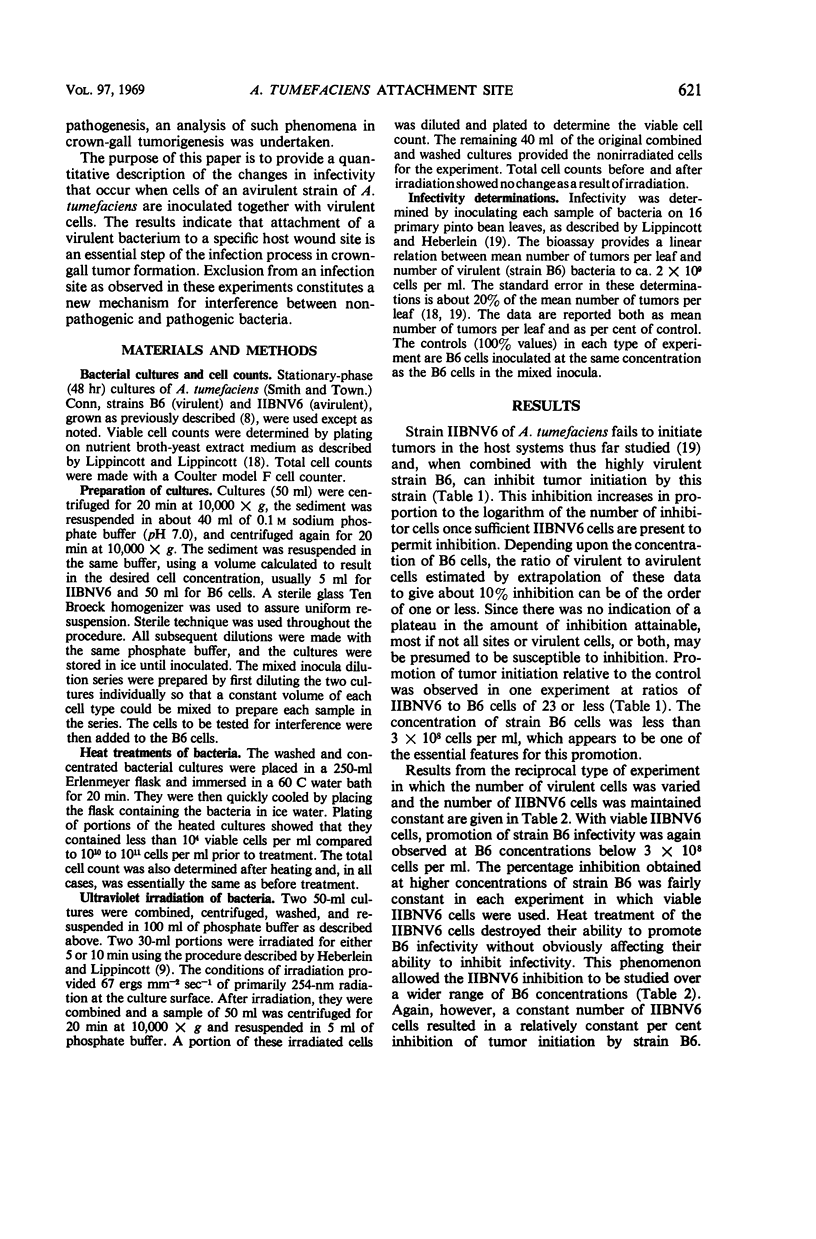
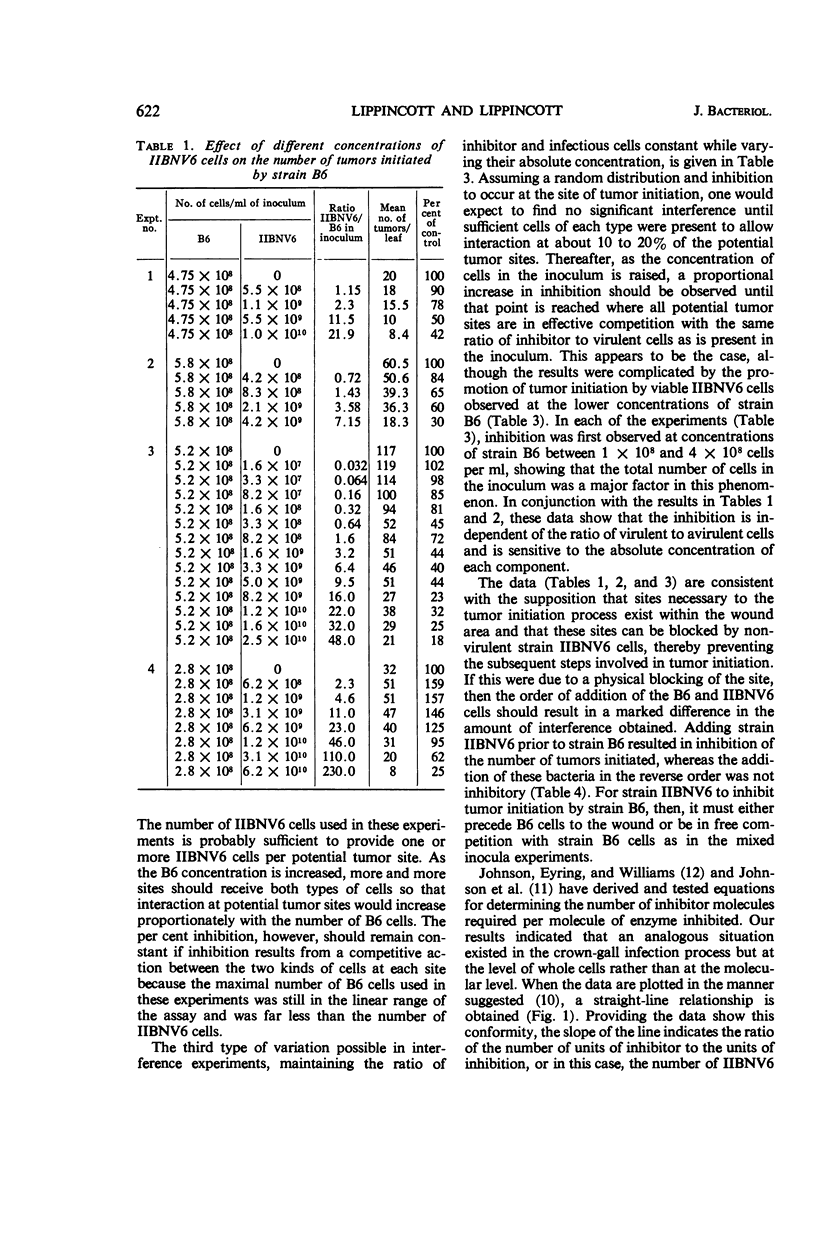

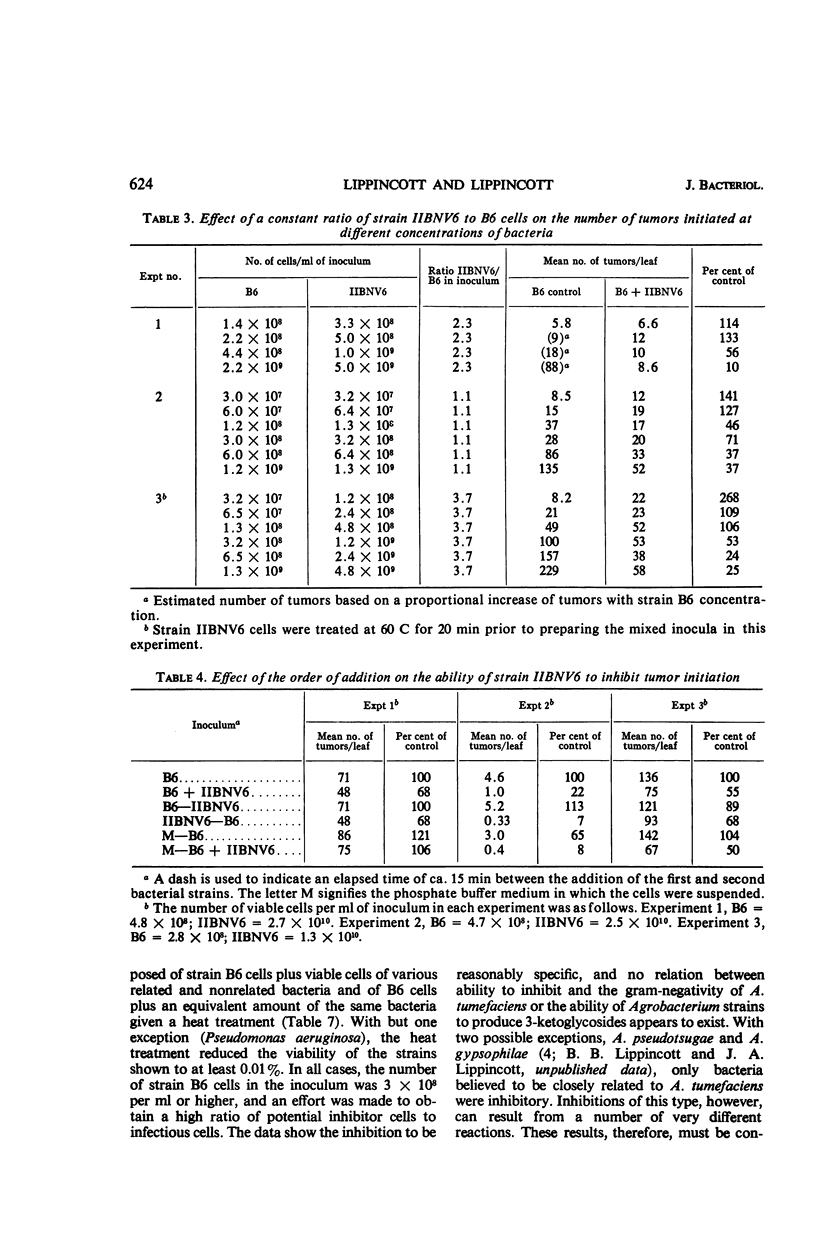
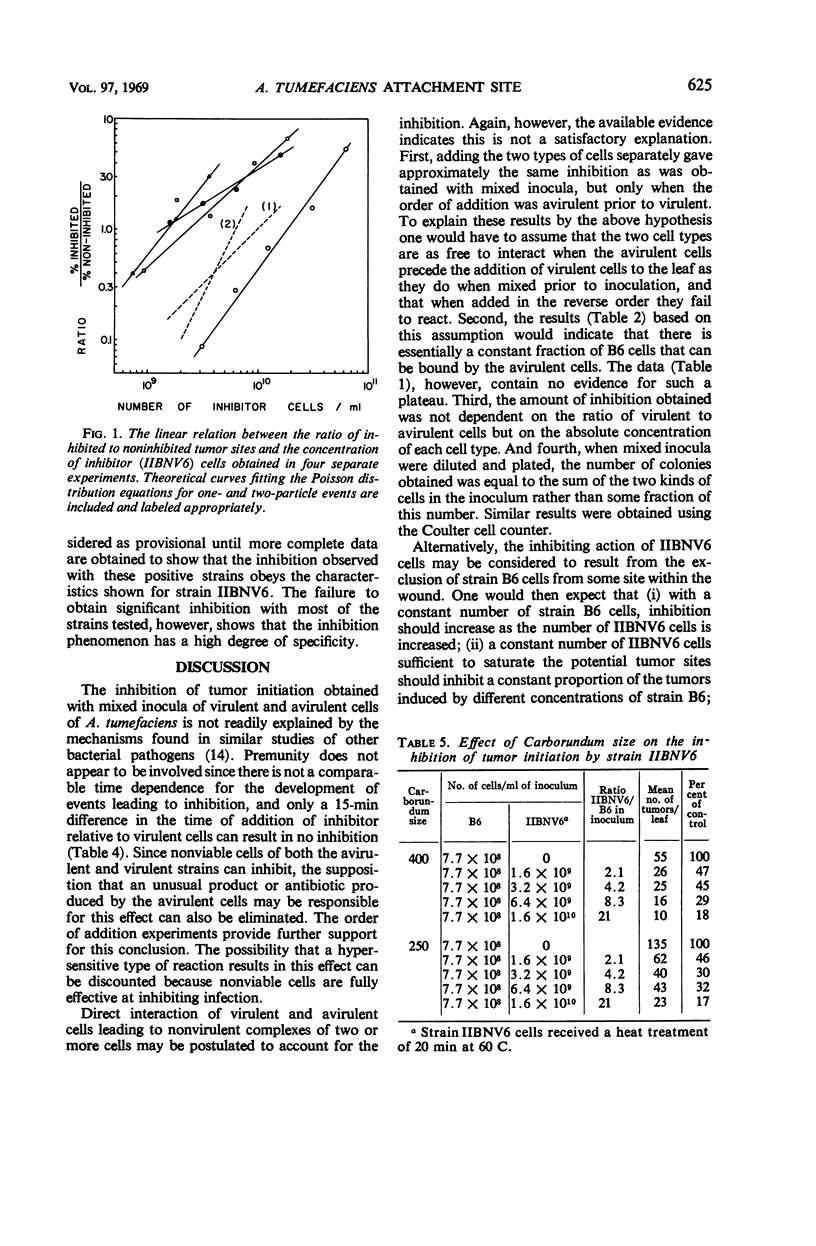
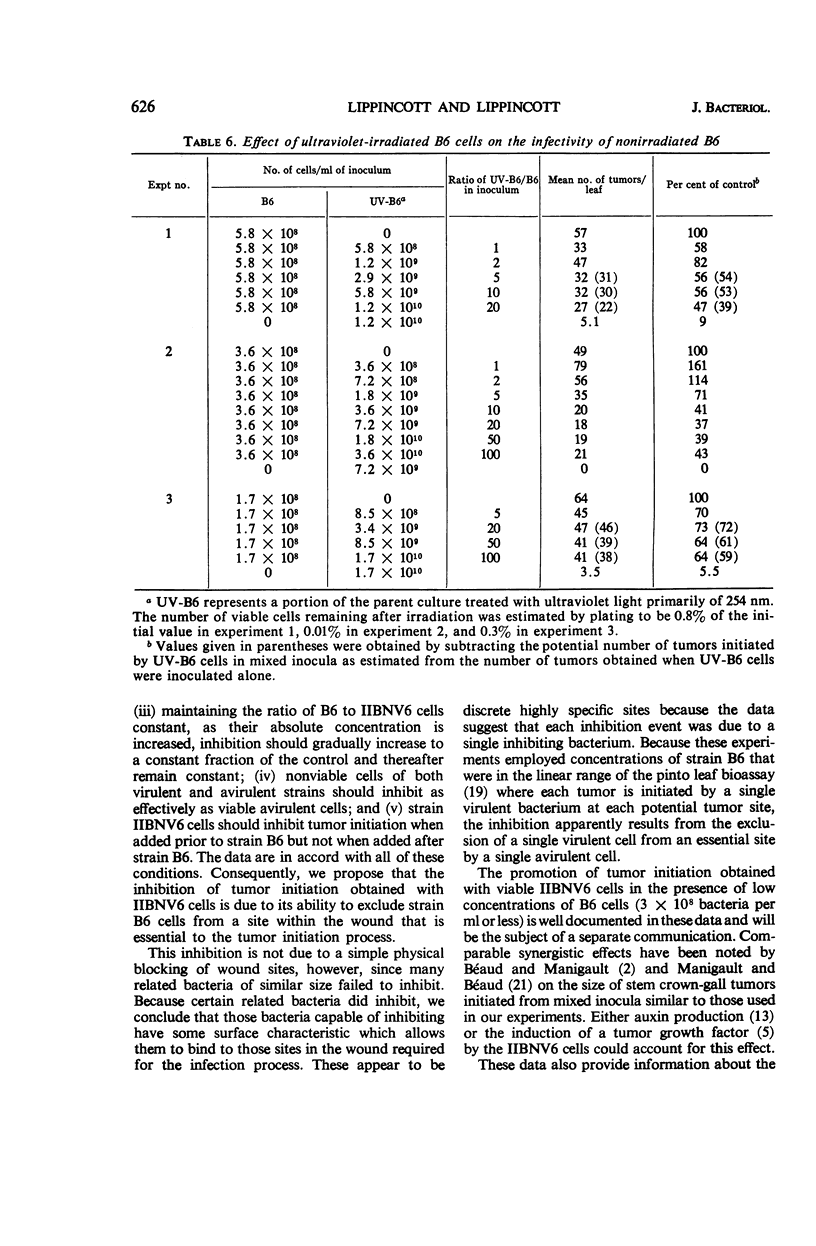
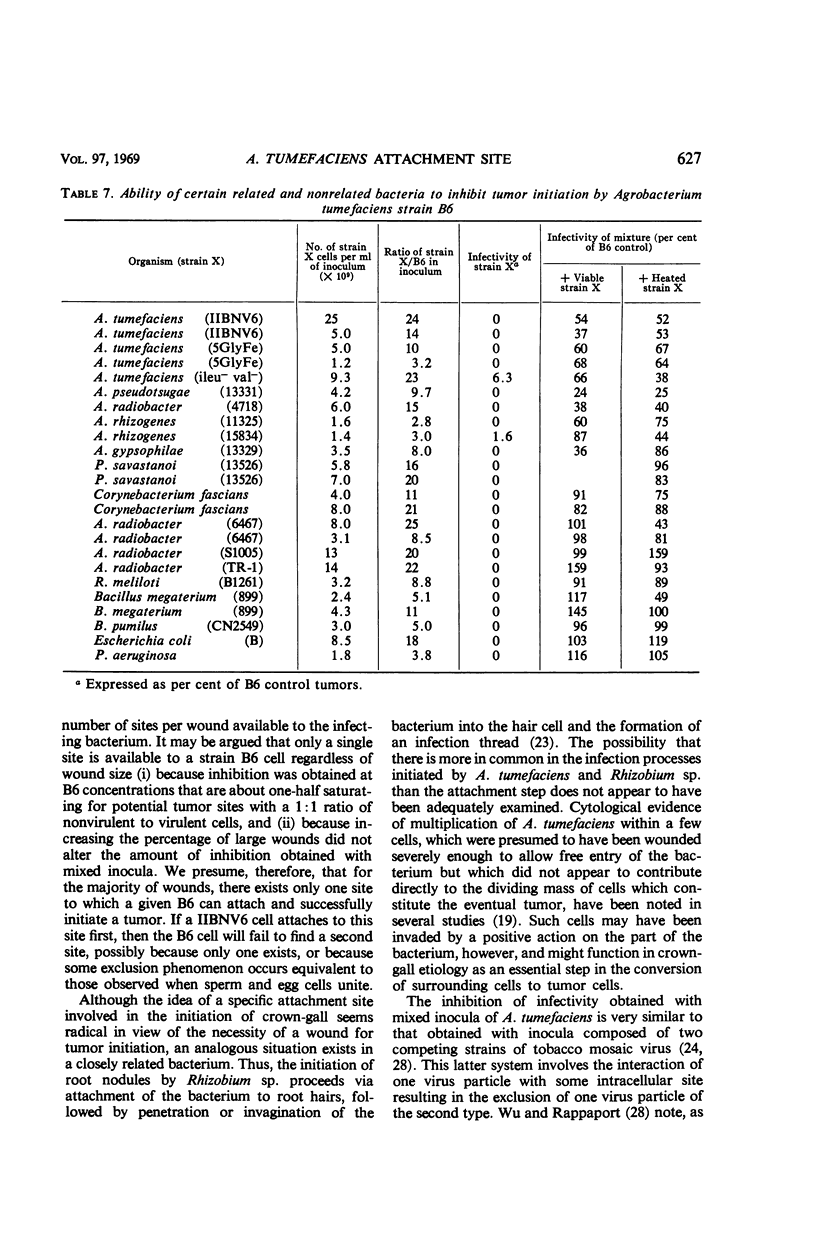
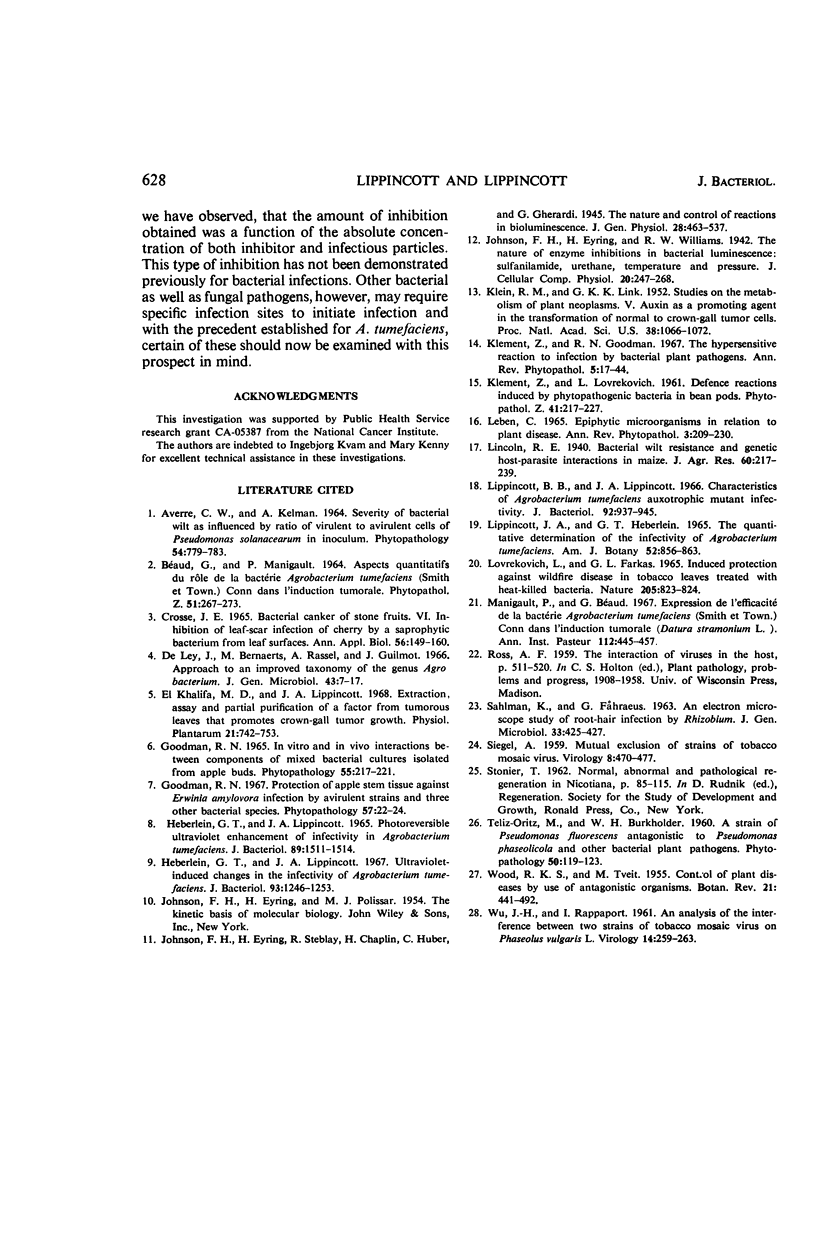
Selected References
These references are in PubMed. This may not be the complete list of references from this article.
- De Ley J., Bernaerts M., Rassel A., Guilmot J. Approach to an improved taxonomy of the genus Agrobacterium. J Gen Microbiol. 1966 Apr;43(1):7–17. doi: 10.1099/00221287-43-1-7. [DOI] [PubMed] [Google Scholar]
- GOODMAN R. N. IN VITRO AND IN VIVO INTERACTIONS BETWEEN COMPONENTS OF MIXED BACTERIAL CULTURES ISOLATED FROM APPLE BUDS. Phytopathology. 1965 Feb;55:217–221. [PubMed] [Google Scholar]
- HEBERLEIN G. T., LIPPINCOTT J. A. PHOTOREVERSIBLE ULTRAVIOLET ENHANCEMENT OF INFECTIVITY IN AGROBACTERIUM TUMEFACIENS. J Bacteriol. 1965 Jun;89:1511–1514. doi: 10.1128/jb.89.6.1511-1514.1965. [DOI] [PMC free article] [PubMed] [Google Scholar]
- Heberlein G. T., Lippincott J. A. Ultraviolet-induced changes in the infectivity of Agrobacterium tumefaciens. J Bacteriol. 1967 Apr;93(4):1246–1253. doi: 10.1128/jb.93.4.1246-1253.1967. [DOI] [PMC free article] [PubMed] [Google Scholar]
- Klein R. M., Link G. K. Studies on the Metabolism of Plant Neoplasms: V. Auxin as a Promoting Agent in the Transformation of Normal to Crown-Gall Tumor Cells. Proc Natl Acad Sci U S A. 1952 Dec;38(12):1066–1072. doi: 10.1073/pnas.38.12.1066. [DOI] [PMC free article] [PubMed] [Google Scholar]
- Lippincott B. B., Lippincott J. A. Characteristics of Agrobacterium tumefaciens auxotrophic mutant infectivity. J Bacteriol. 1966 Oct;92(4):937–945. doi: 10.1128/jb.92.4.937-945.1966. [DOI] [PMC free article] [PubMed] [Google Scholar]
- Lippincott J. A., Heberlein G. T. The quantitative determination of the infectivity of Agrobacterium tumefaciens. Am J Bot. 1965 Sep;52(8):856–863. [PubMed] [Google Scholar]
- SAHLMAN K. AN ELECTRON MICROSCOPE STUDY OF ROOT-HAIR INFECTION BY RHIZOBIUM. J Gen Microbiol. 1963 Dec;33:425–427. doi: 10.1099/00221287-33-3-425. [DOI] [PubMed] [Google Scholar]
- SIEGEL A. Mutual exclusion of strains of tobacco mosaic virus. Virology. 1959 Aug;8:470–477. doi: 10.1016/0042-6822(59)90049-2. [DOI] [PubMed] [Google Scholar]
- WU J. H., RAPPAPORT I. An analysis of the interference between two strains of tobacco mosaic virus on Phaseolus vulgaris L. Virology. 1961 Jun;14:259–263. doi: 10.1016/0042-6822(61)90201-x. [DOI] [PubMed] [Google Scholar]


